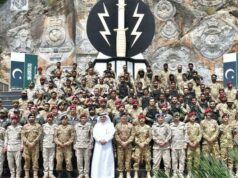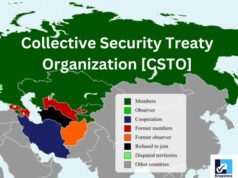Indigenous Attack Helicopters To Equip Each Corps Aviation Brigades

The Light Attack Helicopter was envisaged right after the Kargil War especially for providing fire support in High Altitude Areas. Development was completed by 2010 using the Dhruv helicopter as the starting point. A few prototypes were manufactured and field trials commenced thereafter from 2012 onwards.
This helicopter can operate in high altitude beyond 15000ft with much more weapon load than what similar western helicopters are capable of. HAL had focused on developing a helicopter specially for operating in such areas.
The performance of the LCH is phenomenal and gives tremendous Confidence to the pilot while operating. The flight envelop, handling, characteristics, speed etc are excellent. The maximum take off weight of this combat helicopter is 5800kg and it can carry a payload of 700kg of weapons on its four hard points. There can be two air to air missiles or 4 anti tank missiles with rockets, cluster bombs or unguided bombs. There is a cannon too.
It can fly with maximum speed of 270 km per hour and has a range of 550km with full weapons load. The maximum endurance is slightly over 3 hours with full fuel. The maximum altitude is 6500m ie over 21000ft. It has a missile approach warning system and chaff and flare dispensers.
With clearance coming from CEMILAC in Jan 2019, orders were given for 15 helicopters fir the Army Aviation Corps. These helicopters should be entering service some time this year.
More orders were stuck due to price negotiations between the MoD and the HAL as money will be paid from the Army budget. With crucial — and sticky — price negotiations complete, HAL is finally ready for a huge order for an additional 150 helicopters for the Army and the IAF. While the Indian Air Force will be the LCH’s launch customer, the Indian Army will receive most of the 165 planned airframes.
The aim is likely to be to have at least one squadron of this attack helicopter with each of our Corps. In the overall scheme of things each Corps should be getting an Aviation Brigade. So at least 156 helicopters will be required for this purpose alone. Later on the strike Corps may be given additional Squadrons. A few will be required for the Combat Army Aviation School, Nasik. Similarly IAF needs at least a flight each for defending its forward airbases and other important bases from enemy’s ground actions, for which around 90+ should easily be required.
Unlike virtually every other attack helicopter in the market, the LCH’s biggest designed-in capability is high altitude performance. Prototypes of the helicopter have been deployed repeatedly over the last decade in the super-high altitude areas of Ladakh and the Siachen Glacier.
Manufacturing and fabrication work has already started up at HAL’s facility in Bengaluru. In February this year, right before the COVID-19 pandemic hit, HAL inaugurated the LCH final assembly hangar. Nine frames are already at Completion stage and require to start with fittings inside.



